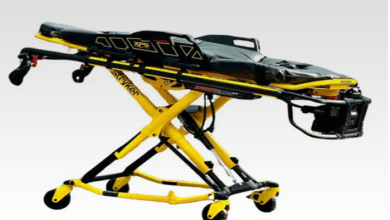
Your safety is important whether you work at height daily or occasionally. It only takes a single mistake to turn a routine task into a severe injury or fatality. This means that you always need to protect yourself all time you are exposed to a fall threat. Studies show that falls from height have been among the leading causes of deaths at workplaces and a major cause of serious injuries. To protect yourself from such misfortunes, understand and follow height safety precautions. Let’s look at tips you can use to be safe whenever you are working at heights.
Adequate Training
One of the first steps to keeping your employees who work at height safe is by offering them the right training. They should understand and be able to follow working-at-height regulations. Ensure that everyone involved in this type of work is competent or is being supervised by a competent professional. Train individuals who will be working at height how to avoid falls and minimize injuries in case they fall.
Identify Potential Fall Hazards
Falling can be caused by many factors including the hazards that are near the working area. Workers should understand potential hazards and be able to avoid them. Teach them how to improve job safety and identify potential risks. This way, you will have reduced the risk of injuries and eliminated.
Provide Proper PPE
Do not allow your workers to work at heights without proper PPE. Make sure they have tools at height kits, with all safety tools required for working at heights. The tool kit should have lanyards, harnesses, clips, belts and all necessary tools. The PPE should also be inspected before use to make sure they are in the right condition. Train all workers on what to look for when inspecting tools and what they should do in case of any issue.
Understand and Calculate Fall Distance
While it might seem silly to mention this, calculating the fall distance accurately is vital. You may have all the fall protection equipment, but it is pointless if it fails to engage before you hit the ground. It seems like common sense, but it is easy to get this part wrong, and this can lead to an injury or fatality. For instance, wearing a 10-foot harness would not work adequately for a 15-foot fall. Calculate distance correctly and use the right PPE to be safe in case of a fall.
Ladder and Lift Safety
Ladder safety is essential since you can get injured by falling from a short distance. The law says that using a ladder for only a short duration cannot be the deciding factor when establishing if it’s appropriate. It is important to assess the risk of the job before anything. Ensure that it is located in a practical environment and at a stable level.
Ensure that you are appropriately tied off when operating a lift attached to the engineered anchor point. While scissors lifts do not require to be tied off, it is wise to do so to increase your safety. Know the chain on a lift is closed and keep your feet planted firmly in the platform center.
In conclusion, while workplace injuries occur in all work environments, the risk and the severity of injury increase when working at heights. It is, therefore, important to follow the right height safety precautions. Get adequate training, use the right protection equipment, calculate height distance accurately, and learn how to use lift and ladder safely to improve your safety at work.




